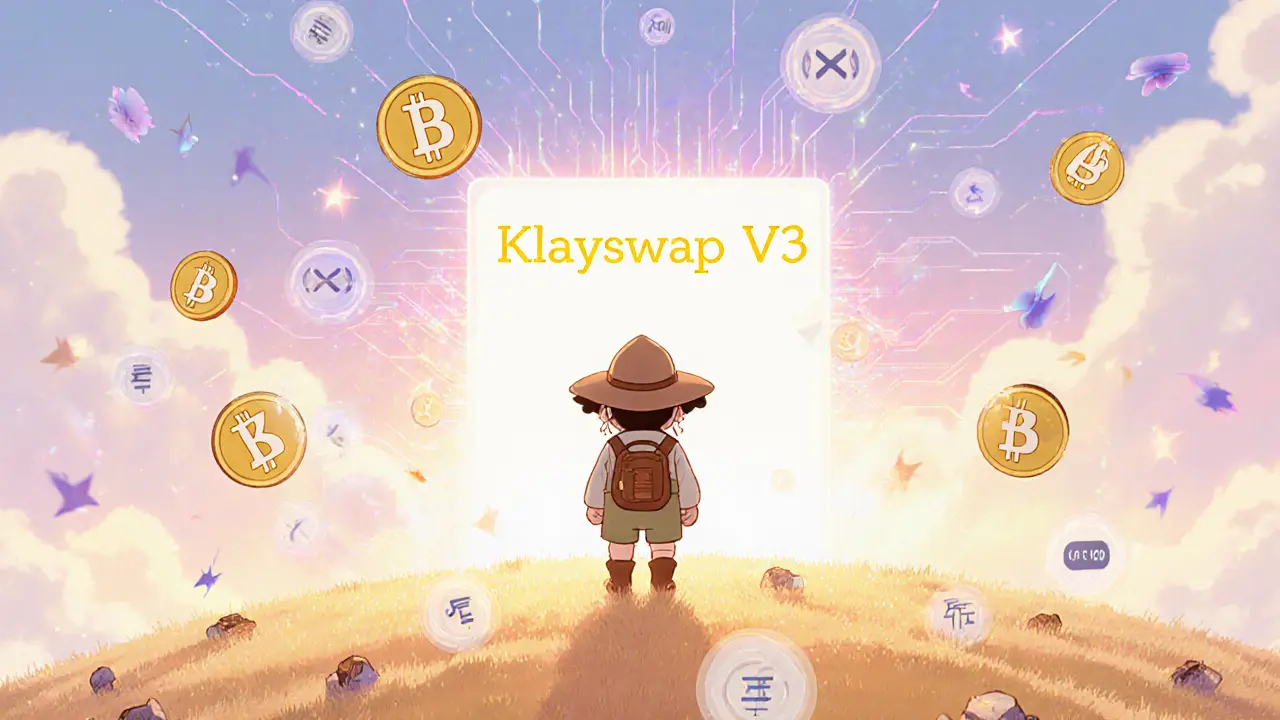EMX Leverage Calculator
EMX Leverage Requirements
EMX requires BTC, ETH, TUSD, or USDT as collateral for leveraged positions.
Maximum leverage varies by asset: 10-50x for traditional assets, up to 100x for crypto contracts.
Margin Requirements
WARNING: EMX's leverage can magnify losses up to 100x. Liquidation occurs when collateral falls below maintenance margin. Only experienced traders should use high leverage.
Key Takeaways
- EMX targets sophisticated traders with a hybrid mix of crypto and traditional‑asset derivatives.
- Leverage ranges from 10x to 100x, but only BTC, ETH, TUSD and USDT can be used as collateral.
- U.S. residents are blocked due to SEC restrictions, cutting out roughly a quarter of global crypto traders.
- Fees are competitive for high‑volume traders, yet the exchange lacks transparent volume reporting.
- Alternatives like Binance and Bybit offer broader spot markets and US access, but they don’t combine traditional asset swaps.
If you’ve ever wondered whether a niche platform can give you exposure to gold, oil, or the S&P500 alongside Bitcoin, the EMX crypto exchange promises exactly that. Launched in May2019 and based out of PaloAlto, California, EMX positions itself as a one‑stop shop for derivative contracts that bridge the crypto world and traditional finance. This review breaks down the platform’s core offering, fees, security posture, and who should (or shouldn’t) sign up.
What Is EMX?
EMX is a centralized cryptocurrency exchange that specializes in derivative contracts for both digital assets and traditional financial instruments. Founded in 2019, the exchange operates under a non‑U.S. jurisdiction to avoid SEC registration requirements. Unlike mainstream platforms that focus on spot trading, EMX’s primary focus is on perpetual swaps and futures.
Derivatives Portfolio - Crypto Meets Traditional Assets
The platform lists perpetual swaps for major cryptocurrencies such as Bitcoin (BTC) and Ethereum (ETH), plus less‑common contracts for Chainlink (LINK), Tether (USDT) and Tezos (XTZ). What truly sets EMX apart is its inclusion of traditional‑asset derivatives: perpetual swaps for Gold, USOil, the S&P500 (US500), EUR/USD, Brazil’s Bovespa index (BRAZIL60), and the Brazilian real/USD pair.
Traders can open positions using crypto collateral-BTC, ETH, TUSD, or USDT-while selecting leverage that matches the contract. Leverage options vary from 10x on lower‑volatility assets to a maximum of 100x on select crypto‑only contracts.
Leverage, Collateral, and Risk Controls
Leverage is a double‑edged sword. EMX’s Leverage feature lets users amplify exposure up to 100x, but the platform requires a minimum collateral ratio that adjusts in real time based on market volatility. If your collateral falls below the maintenance margin, positions are liquidated automatically.
Because only a handful of coins are accepted as collateral, users need to convert other holdings into BTC, ETH, TUSD, or USDT before trading. This extra step can add transaction fees and slippage, especially on smaller accounts.

Fees Structure
EMX follows a maker‑taker model common among derivatives exchanges. Makers (limit orders that add liquidity) enjoy a 0.02% rebate, while takers (market orders that remove liquidity) pay 0.04% per contract. Funding fees for perpetual swaps are calculated every eight hours and can be either positive or negative depending on the long‑short imbalance.
Deposit fees differ by method: wire transfers incur a flat $15 fee, debit‑card deposits are charged 1.5%, and crypto deposits are free (network fees still apply). Withdrawal fees are based on the blockchain network used; for Bitcoin, EMX charges a $0.0005BTC fee.
Security and Compliance
Security details for EMX are sparse. The exchange has not published a formal Proof‑of‑Reserves audit, nor does it provide regular security audit reports like Kraken or Binance. However, it does claim to store the bulk of user funds in cold wallets and employs two‑factor authentication (2FA) for account access.
Compliance is driven by the need to avoid the U.S. Securities and Exchange Commission (SEC). EMX explicitly blocks U.S. IP addresses and requires users to confirm non‑U.S. residency during KYC. This restriction removes approximately 25% of the global crypto‑trading population, according to CipherTrace’s 2025 market share data.
User Experience and Support
The web interface is clean and resembles the design language of popular derivatives platforms. There is no dedicated mobile app; all trading occurs via a responsive browser UI. Documentation covers the basics of margin trading, but deeper guides (e.g., on funding rate mechanics) are limited. Support is handled through an email ticket system with a typical response time of 24‑48hours. No live chat or phone support is offered.
According to Cryptowisser, the platform feels “intuitive” for seasoned traders, yet beginners may struggle with the steep learning curve inherent to derivatives markets.
How to Get Started on EMX
- Visit the EMX website and click “Register”.
- Complete the KYC form, confirming a non‑U.S. address (passport or utility bill).
- Choose a deposit method-wire, debit card, or crypto transfer.
- Deposit BTC, ETH, TUSD, or USDT to serve as collateral.
- Navigate to the “Derivatives” tab, select a contract (e.g., Gold perpetual swap), set leverage, and place a limit or market order.
After the first trade, monitor the maintenance margin closely; EMX will issue a margin call if your equity falls below the required level.

Pros and Cons at a Glance
| Pros | Cons |
|---|---|
| Hybrid crypto‑and‑traditional derivatives on one platform | No U.S. access - blocks a large user base |
| Leverage up to 100x for experienced traders | Lack of transparent volume data (untracked on CoinMarketCap) |
| Competitive maker‑taker fees | Limited educational resources and customer support channels |
| Cold‑wallet storage of majority of funds | No mobile app - only web UI |
How Does EMX Compare to the Big Players?
| Platform | Derivatives Offered | Traditional Asset Swaps | Max Leverage | U.S. Access |
|---|---|---|---|---|
| EMX | Crypto perpetual swaps (BTC, ETH, LINK, etc.) + futures | Gold, US Oil, S&P500, EUR/USD, BRAZIL60, USD/BRL | Up to 100x (crypto), 10‑50x (traditional) | No |
| Binance | Wide range of crypto futures and options | None (pure crypto) | Up to 125x (selected contracts) | Limited (via Binance.US) |
| Bybit | Crypto futures, perpetuals, options | None (pure crypto) | Up to 100x | Blocked for U.S. residents |
For traders seeking exposure to gold or oil without opening a separate brokerage account, EMX is the only option in this trio. However, if you need spot trading, a robust mobile app, or U.S. eligibility, Binance or Bybit might be a better fit.
Is EMX Worth Your Time?
Answering this question depends on three factors:
- Trading strategy: If your plan involves hedging crypto positions with traditional commodities, EMX gives you a one‑stop solution.
- Regulatory location: Non‑U.S. residents can use the platform without hassle; U.S. citizens must look elsewhere.
- Risk tolerance: High leverage amplifies gains but also magnifies losses. EMX’s liquidation engine is strict, so you must monitor margin continuously.
Overall, EMX is a niche tool for advanced traders-think of it as a specialized toolbox rather than an all‑purpose exchange.
Frequently Asked Questions
Can I use EMX if I live in the United States?
No. EMX blocks U.S. IP addresses and requires non‑U.S. residency during KYC. The restriction is due to SEC regulations.
What traditional assets can I trade on EMX?
EMX offers perpetual swaps for Gold, US Oil, the S&P500 (US500), EUR/USD, Brazil’s Bovespa index (BRAZIL60), and the USD/BRL pair.
Which coins can I use as collateral?
Only Bitcoin (BTC), Ethereum (ETH), TUSD, and USDT are accepted as collateral for leveraged positions.
How are fees calculated on EMX?
EMX uses a maker‑taker model: makers receive a 0.02% rebate, takers pay 0.04%. Funding fees are applied every eight hours on perpetual swaps and vary with market imbalance.
Is there a mobile app for EMX?
No dedicated mobile app exists; traders use the responsive web UI on smartphones or tablets.








Michael Grima
September 6, 2025 AT 12:48 PMGreat another exchange pretends to be revolutionary while blocking half the world.
Michael Bagryantsev
September 16, 2025 AT 22:48 PMI get why some folks feel frustrated – the platform looks slick but the U.S. ban hurts many legit traders. Still, for those outside the States, EMX does fill a niche that most big players ignore. If you decide to dip your toes in, start small and keep an eye on the maintenance margin.
Maria Rita
September 27, 2025 AT 08:48 AMListen, the leverage on EMX can feel like stepping onto a roller‑coaster with no safety bar! You’re playing with fire if you don’t respect the liquidation engine. My advice: treat each trade like a drama – rehearse, know your exit, and never bet more than you can afford to lose.
Jordann Vierii
October 7, 2025 AT 18:48 PMEMX is a bold experiment, marrying crypto volatility with traditional‑asset stability. It shows how markets can cross cultural borders, giving traders worldwide a taste of gold and oil without a broker.
Lesley DeBow
October 18, 2025 AT 04:48 AMOne could say EMX reflects the paradox of freedom: it offers limitless trade ideas yet shackles users by geography. When you think about it, isn’t that the very essence of modern finance? :)
DeAnna Greenhaw
October 28, 2025 AT 14:48 PMIn the contemporary panorama of digital asset exchanges, EMX purports to occupy a singular stratum by interlacing cryptocurrency derivatives with conventional financial instruments, thereby proffering a hybridized trading suite that ostensibly caters to a cohort of sophisticated market participants. The platform’s architecture, inaugurated in the spring of 2019, ostensibly leverages the regulatory latitude afforded by its domicile outside the United States, a stratagem designed to circumvent the stringent oversight of the Securities and Exchange Commission. This circumvention, while legally permissible, engenders a palpable exclusion of a substantial demographic of traders domiciled within U.S. borders, effectively truncating access to approximately a quarter of the global crypto‑trading populace, as discerned from CipherTrace analytics. Moreover, the exchange’s emphasis on perpetual swaps encompassing both digital tokens such as Bitcoin and Ethereum and venerable assets like gold, crude oil, and the S&P 500 introduces a novel conduit for portfolio diversification, yet concomitantly imposes a heightened exigency for vigilant risk management due to the disparate volatility profiles inherent to these instruments. The leverage offerings, ranging from a modest 10× on low‑volatility commodities to an audacious 100× on select cryptocurrency contracts, amplify both potential reward and peril, necessitating an acute awareness of margin maintenance requirements and the platform’s automated liquidation protocols. Fee structures adhere to a conventional maker‑taker paradigm, with a modest 0.02 % rebate for liquidity providers and a 0.04 % charge for takers, complemented by funding fees that are recalibrated on an eight‑hour cadence contingent upon market imbalances. Notwithstanding the ostensibly competitive fee regime, the paucity of transparent volume reporting and the absence of a verifiable Proof‑of‑Reserves audit engender a residual opacity that may erode confidence among risk‑averse participants. Security postures are superficially addressed through assertions of predominant cold‑wallet storage and two‑factor authentication; however, the dearth of publicly disclosed security audits precludes a comprehensive appraisal of systemic resilience. Operationally, the reliance on a responsive web interface, absent a dedicated mobile application, may impede accessibility for traders accustomed to on‑the‑go market engagement, while the support infrastructure-primarily email‑ticket based with a 24‑48‑hour response window-could be perceived as insufficiently robust for urgent exigencies. In sum, EMX epitomizes a niche yet ambitious endeavor to bridge the cryptographic and conventional financial realms; its utility is unmistakable for traders seeking integrated exposure, yet its idiosyncrasies-regulatory circumscription, limited educational resources, and opaque transparency-warrant circumspect deliberation prior to capital deployment.
Luke L
November 8, 2025 AT 00:48 AMHonestly, the whole U.S. block looks like a nationalist tantrum wrapped in legal jargon.
Cynthia Chiang
November 18, 2025 AT 10:48 AMi knoW it can be frusttrating when the platform iss not accesible for US userz but let’s not forget tht the devellopers are trying to innovate. if you can, try a vpn or look for alt platforms that offer simlar deriviatives, its not the end of the world.